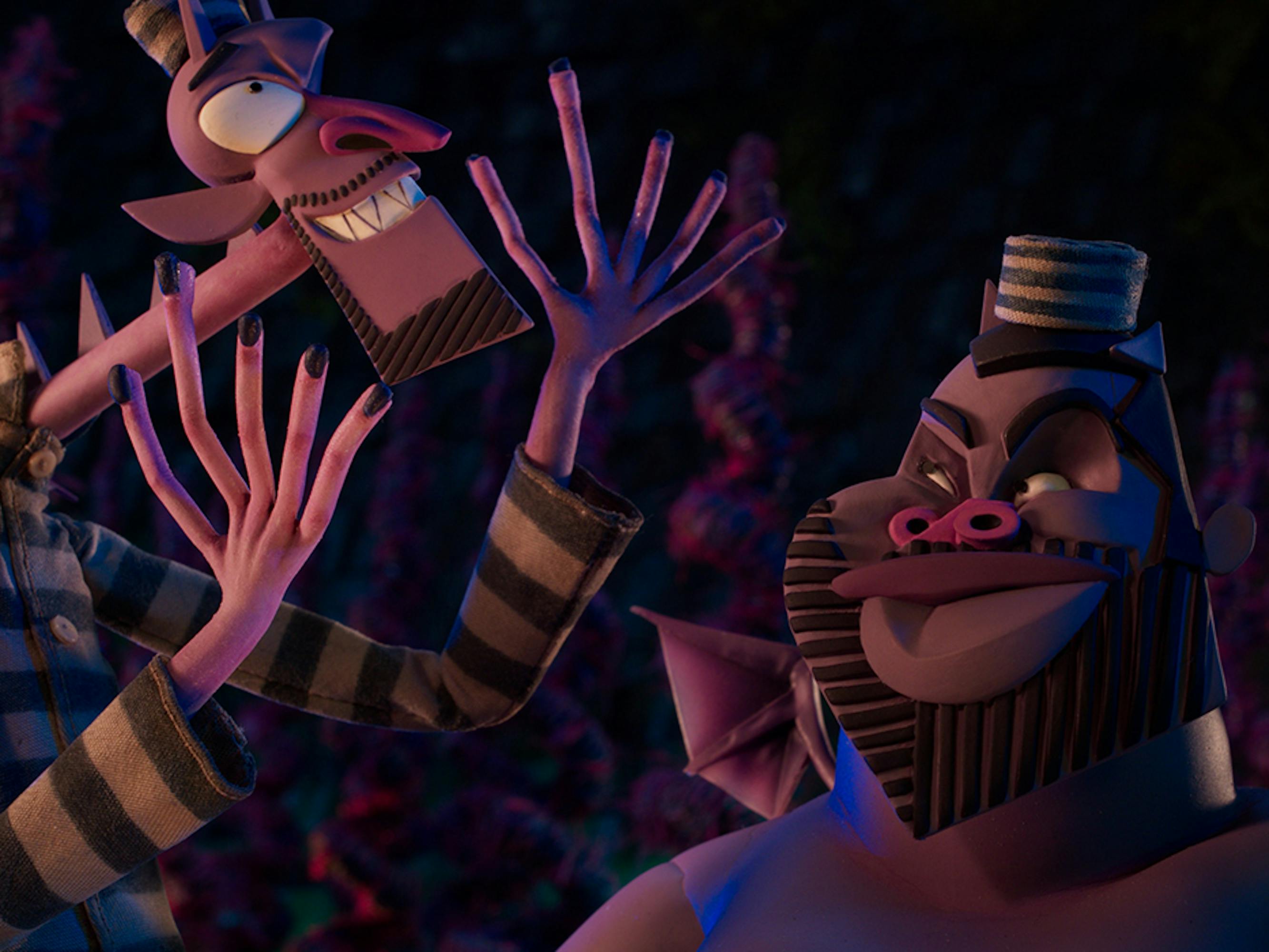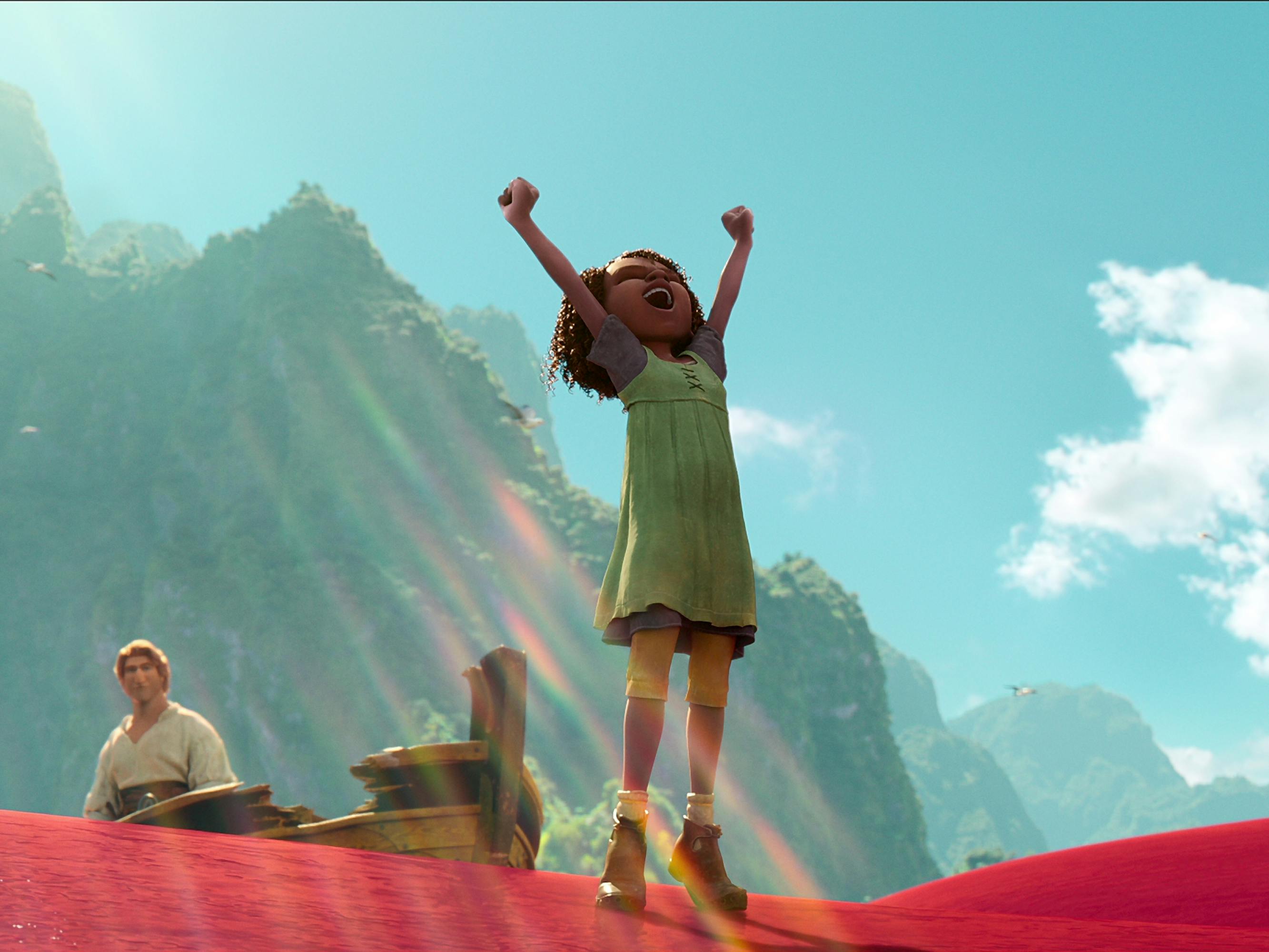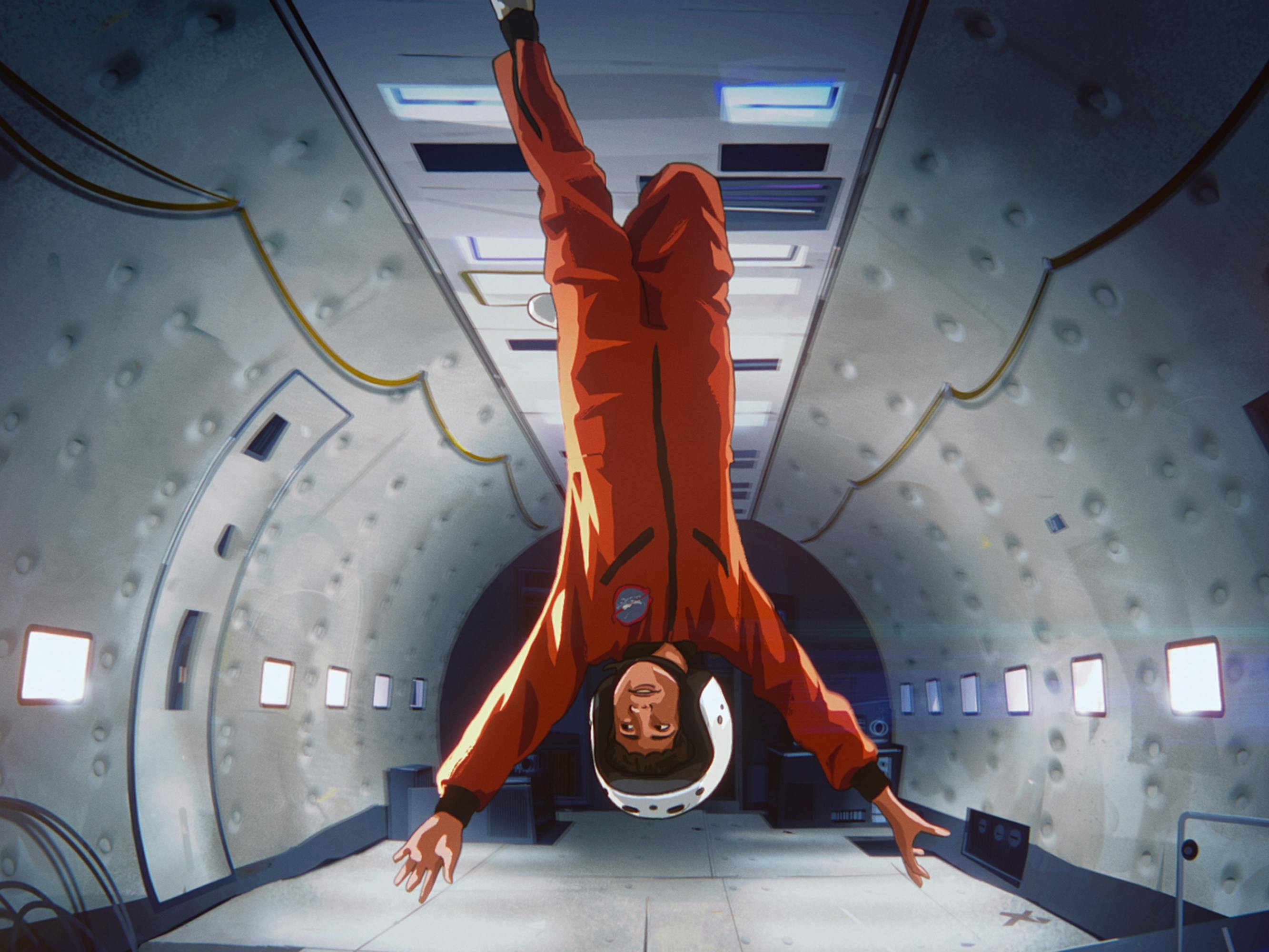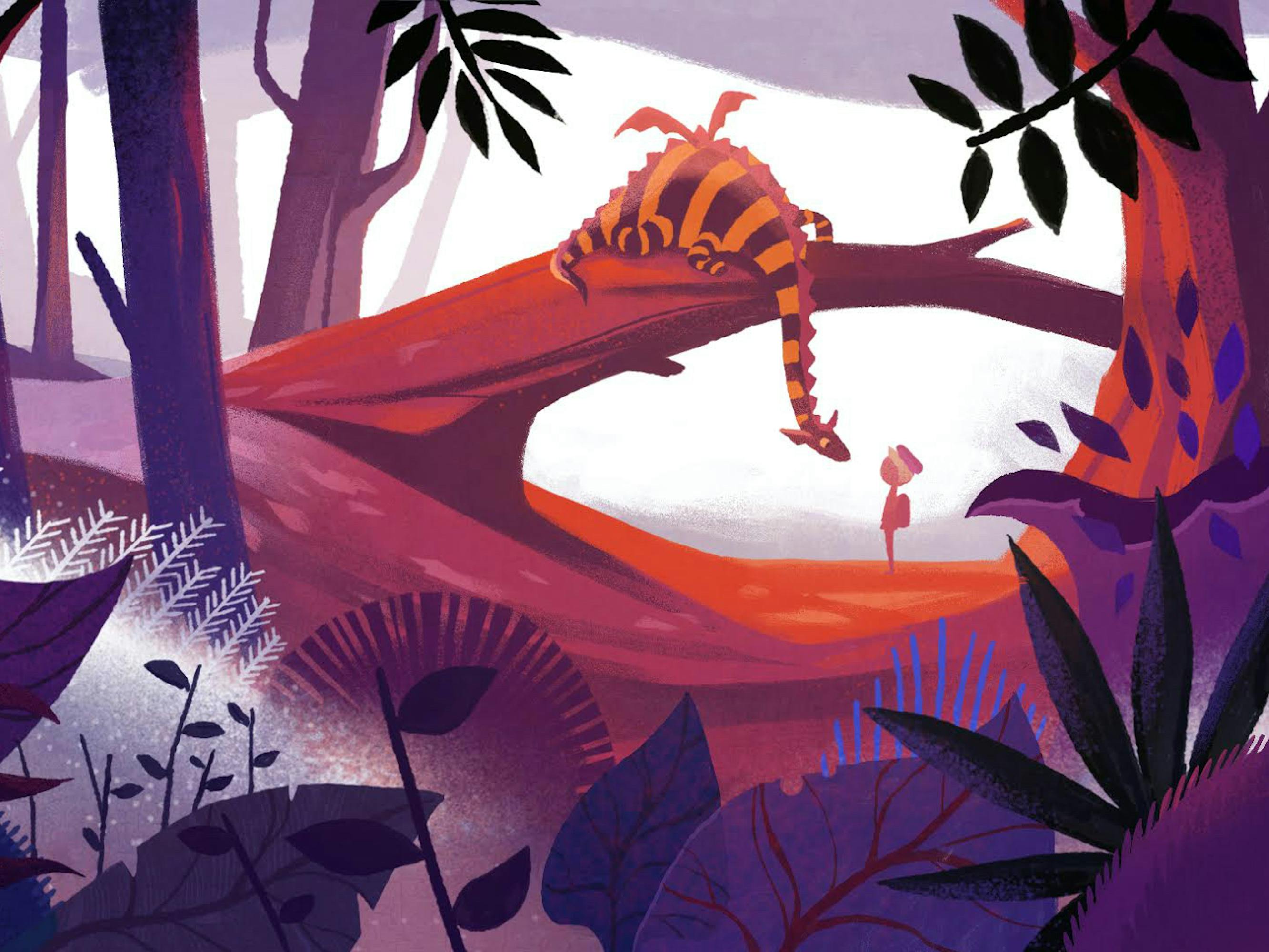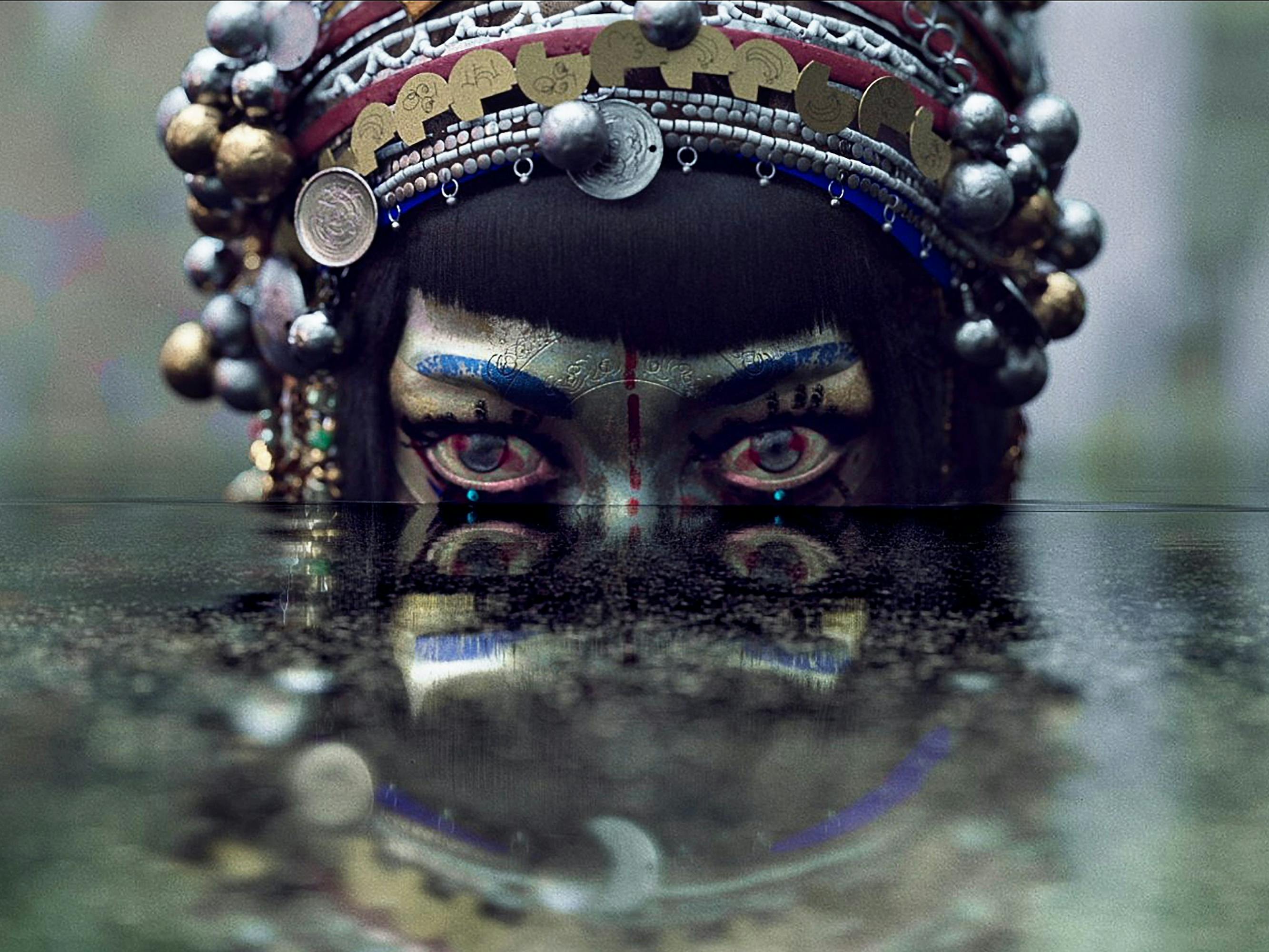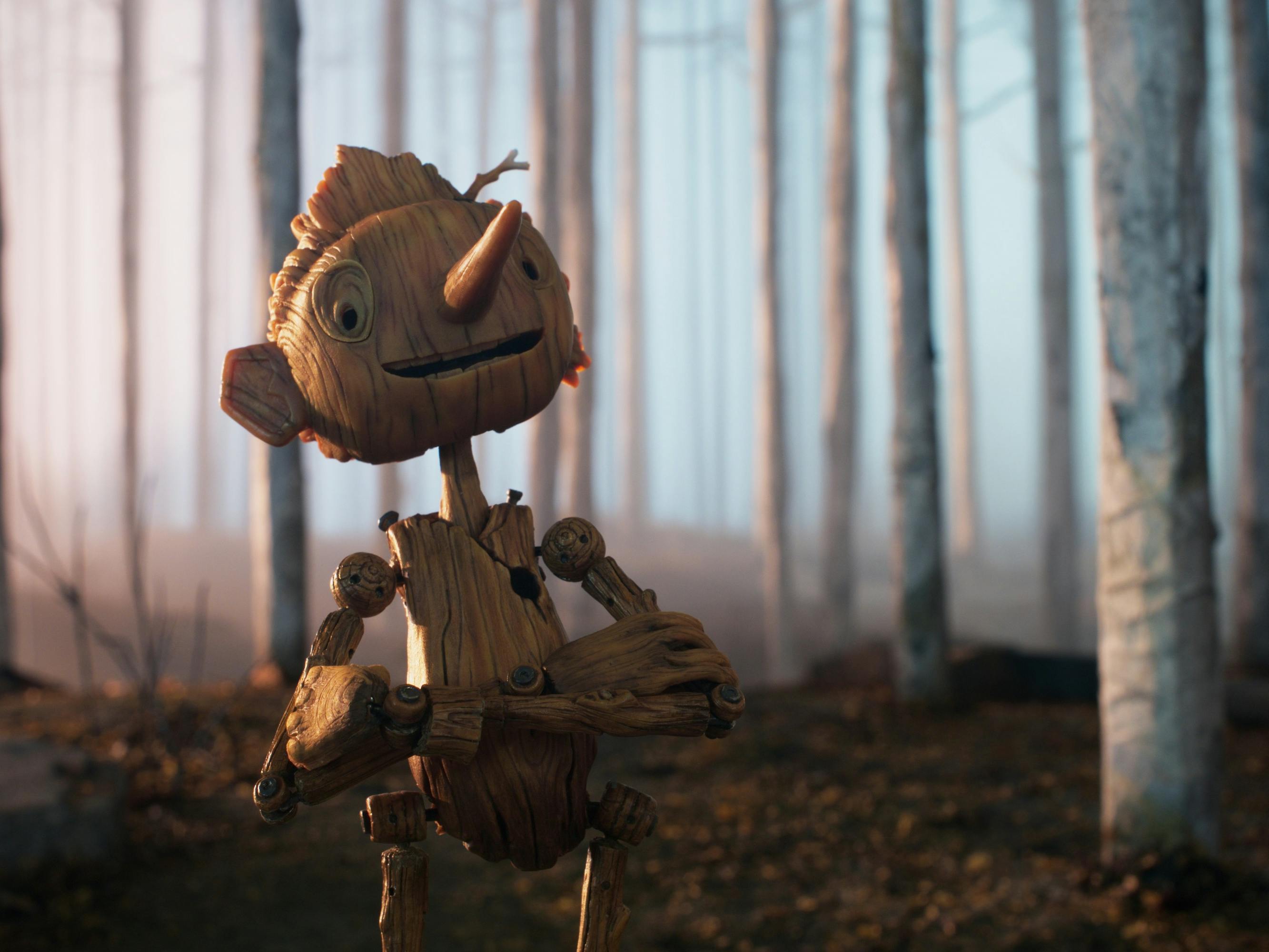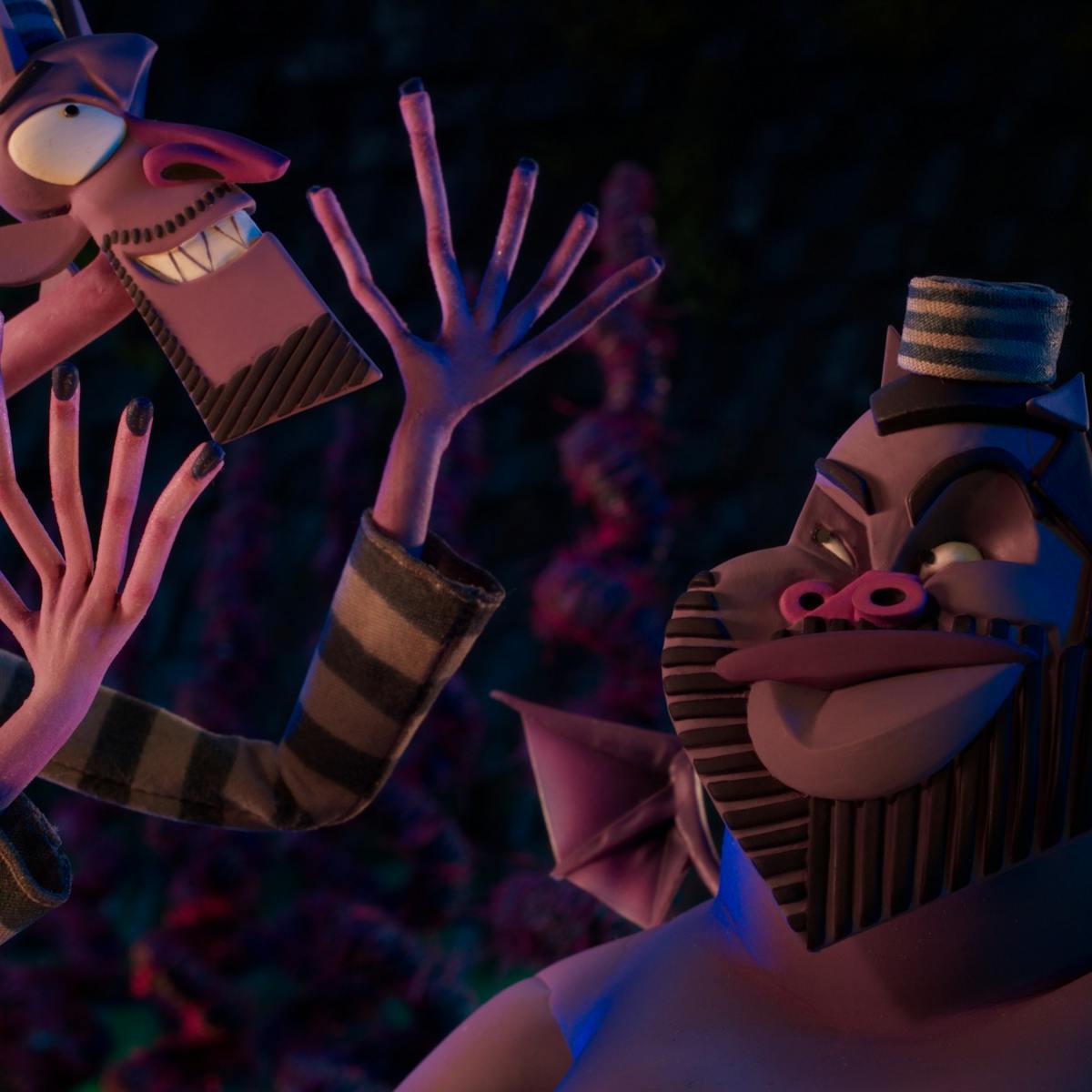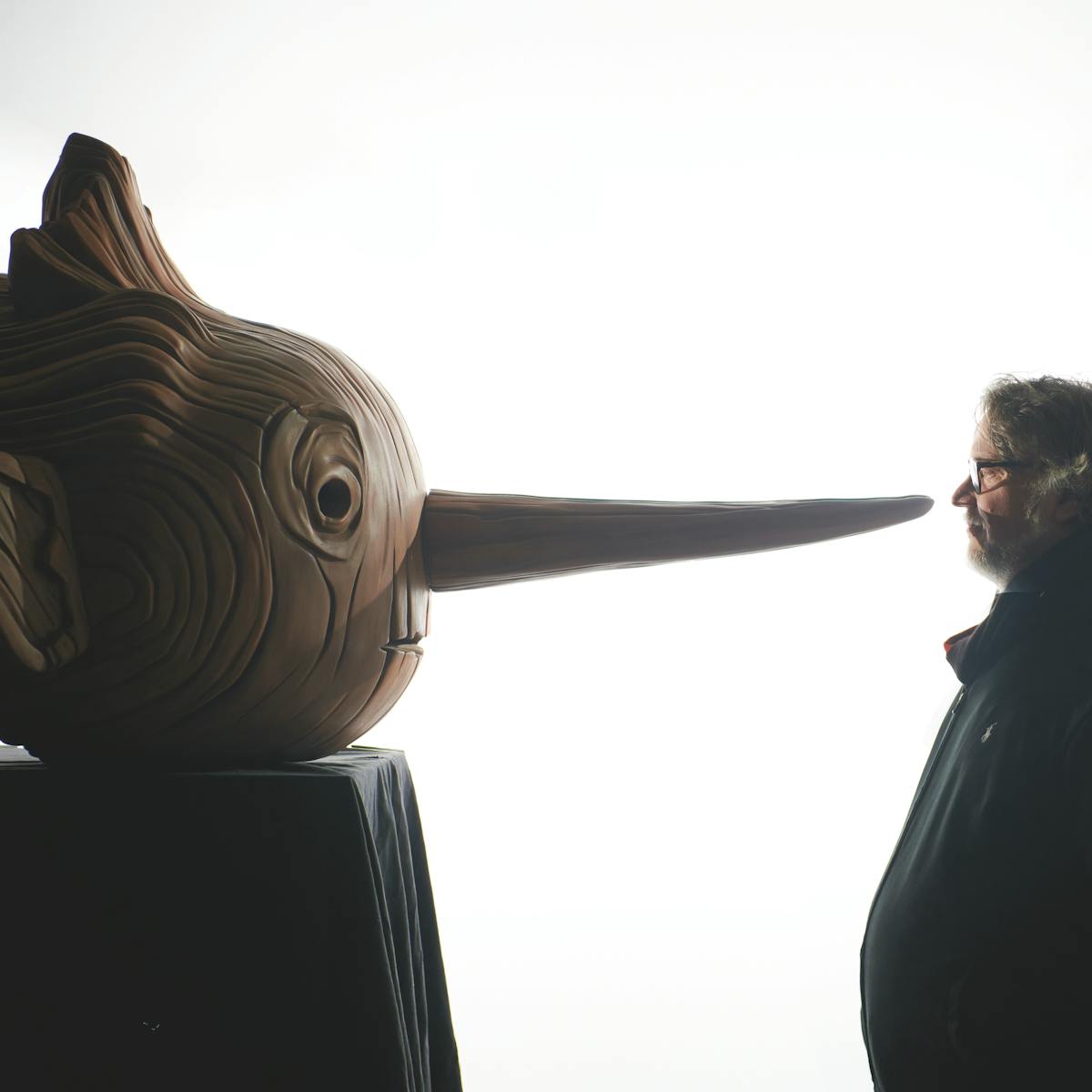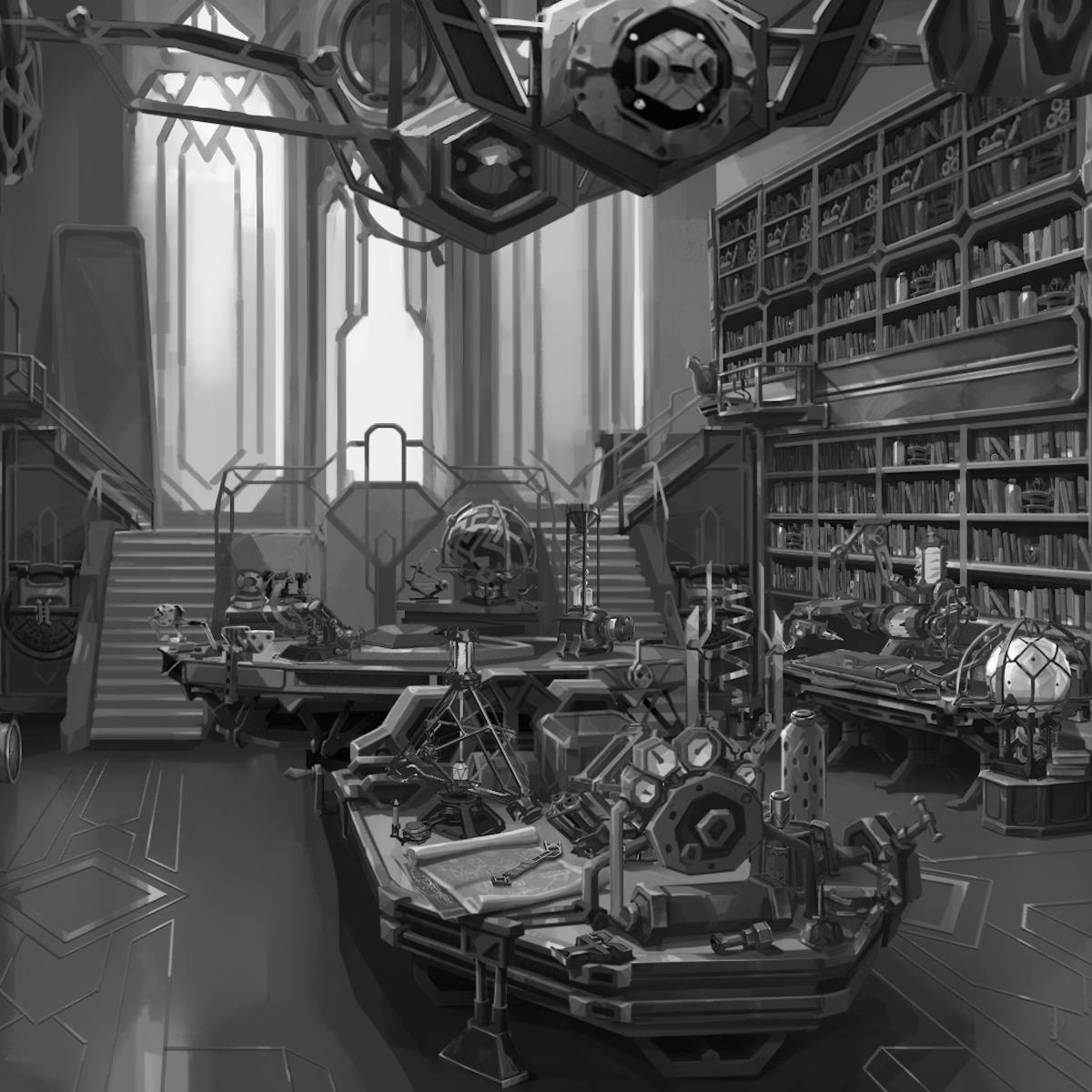Animation is more than a genre — it’s a world of endless possibilities.
Decades before he directed The Nightmare Before Christmas, Coraline, and his latest animated fantasia, Wendell & Wild, Henry Selick would spend every second he could in his suburban New Jersey bedroom feverishly sketching with a pad and pencil. When he was five or six, he was invited to a friend’s birthday party, which included a trip to an old movie theater in Asbury Park called the Paramount. There, he and his pint-size pals excitedly settled in for Disney’s 101 Dalmatians. More than six decades later (this he remembers vividly), the Oscar-nominated filmmaker recalls thinking that it was love at first sight.
If this were a superhero film, that long-ago afternoon in the hushed darkness of a movie palace would be Selick’s origin story. Still, it wouldn’t be until a few years later that a second, even more powerful cinematic experience would turn his blossoming new love into something more urgent and all-consuming — a movie that would end up launching him on the path he would follow for the rest of his life.
Looking back, Selick says his mother always had a sweet tooth for scary movies. So, in a way, it wasn’t surprising that she was the one who whisked him off to see Ray Harryhausen’s 1958 stop-motion classic The 7th Voyage of Sinbad. In an era long before computer-generated effects would replace the hand-crafted wizardry of stop-motion with ones and zeroes, Harryhausen was Hollywood’s resident alchemist thanks to his precise and painstaking form of animation. And while the filmmaker’s mythological monsters moved onscreen with a herky-jerky rhythm that looks a bit cheesy to modern eyes, that didn’t make his creature creations any less mesmerizing back then — at least not for one New Jersey kid who was holding onto his armrest for dear life.
I was totally fascinated and completely terrified. It was a type of magic, this stop-motion animation, it felt so real.
Henry Selick, Wendell & Wild
“I was totally fascinated and completely terrified,” Selick, now 69, recalls with a far-off look in his eyes. “It was a type of magic, this stop-motion animation, it felt so real.” So real, in fact, that the young Selick was possessed by nightmares of Sinbad’s massive Cyclops. “It sort of burned itself into my brain,” he says. “I remember my father had this huge fish tank, and I had this recurring dream that the Cyclops was growing in there and getting bigger and bigger. It stayed with me. It still does. In time, I felt affection for the Cyclops.”
At that young age, Selick didn’t understand what animation was or how it was created. Nor did he know anyone who could explain its secrets to him. But he knew that, somewhere out there, there was a place far from suburban New Jersey where this celluloid magic was being conjured. He wanted to go there and discover those secrets. Selick began to channel that mixture of fear and fascination into his drawings. And eventually, after enrolling at Syracuse University, he began studying illustration, sculpture, painting, printmaking, and photography. As he began photographing his sculptures, moving them little by little into a series of moving images, he realized that he had stumbled upon his Eureka moment.
The mysterious, ineffable world of stop-motion animation that Selick was becoming obsessed with would lead him to Cal Arts, where he met two like-minded classmates: Brad Bird (who would go on to direct The Iron Giant and The Incredibles) and Tim Burton (who would become . . . Tim Burton). And while all three young men would quickly find themselves working in the famed animation boot camp of Disney in the late 70s and early 80s, in their own ways they all felt like outsiders and oddballs there. Square pegs being jammed into round holes. Drawing cute talking animals and fair maidens for the rest of their lives didn’t appeal to them. They wanted to tell more mature stories with sophisticated narratives aimed not just at kids, but at their parents, too.
Selick would remain devoted to his first love, stop-motion, over the years. He would also remain true to his belief that animation didn’t just have to be a way to distract tykes on a rainy day. And now, all these years later, you can see both of those things writ large in his latest film Wendell & Wild — a story geared toward what Selick calls “brave children of all ages.”
In the hauntingly gorgeous film, he tells the story of a pair of scheming underworld demons (voiced by Get Out’s Jordan Peele, who also co-wrote and produced the film, and The Pentaverate’s Keegan-Michael Key) who strike a deal with a young orphan girl that brings them to the land of the living. In other words: Cinderella, it’s not.
Selick says that he and many of his peers in animation sometimes feel as though they’re fighting a constant battle to overcome moviegoers’ pre-judices about their medium. His films, including Wendell & Wild, are both murky and mysterious, beautiful and sublime, complex and primal. They are fractured fairy tales for audiences who’ve moved past safe, G-rated fare and are primed for more challenging and sophisticated storytelling. When asked about the misperception that animated films are just for kids, Selick sighs, “I feel like I’ve been overcoming it my whole life.”
Since the earliest days of animation, the medium has been primarily targeted at kids. Walt Disney understood his target audience and marshaled his brilliant stable of artists to summon wonders that would mesmerize them throughout his studio’s Golden Age in the late 1930s and early 40s. Following WWII, the creative torch was passed to Warner Bros. and its iconic menagerie of Looney Tunes characters: Bugs Bunny, Daffy Duck, the list goes on. In the 60s and 70s, Saturday morning cartoons monopolized the retinas of America’s youth. This may not have been the artistic pinnacle in animation (many of these ’toons seemed to care more about selling breakfast cereal), but the delivery system of television guaranteed their mass popularity. Next came the Disney renaissance that kicked off with Beauty and the Beast and Aladdin, followed by the digital revolution at Pixar that began with Toy Story. What all of these high points in the long history of animation have in common is that they were fueled by entertainment for children. And, as a result, they never quite received the respect they deserved. In fact, it would take until 2001 before animation became a category at the Academy Awards.
There are people who believe that animation isn’t capable of tackling sophisticated or complex subject matters. And that, to me, is absolutely not true.
Chris Williams, The Sea Beast
Today, however, we are in the midst of another animation boom — a boom aimed at a wider variety of demographics using an even wider variety of storytelling sensibilities. All you need to do is look at the diversity of voices and eclectic styles behind Big Mouth, BoJack Horseman, Arcane, Love, Death + Robots, Richard Linklater’s Apollo 10 ½: A Space Age Childhood, and The Sea Beast, not to mention upcoming titles like Nora Twomey’s My Father’s Dragon, Hiroyasu Ishida’s Drifting Home, Scott “Kid Cudi” Mescudi and Kenya Barris’s Entergalactic, and Guillermo del Toro’s Pinocchio. The biggest change between this peak moment in animation and the previous ones is that many of these new stories aren’t even for kids at all. And even the ones that are aimed at younger viewers, seem to be aiming higher. Think of this, then, as the New Golden Age of Animation.
Like Selick, Chris Williams, the Canadian-raised director of The Sea Beast, also spent the early years of his professional apprenticeship at Disney, where he worked on The Lion King and Mulan. Williams says that he remembers first falling in love with animation when he was a five-year-old watching Bambi at a local community center in his hometown of Kitchener, Ontario. Today, Williams is still able to conjure the smallest details of that life-changing afternoon. “I have these tactile memories,” he begins. “I remember sitting on the floor. I remember the floor was hard,” Williams says of the moment Bambi’s mother died. “There was something about that moment that made me think about the fact that my parents were going to die. It got the whole ball rolling of thinking about what it is to live and die, your own sense or mortality, all those sorts of things.”
Despite his emotional scars from Bambi, or perhaps because of them, Williams would go on to a career that included working as a screenwriter and co-director of Moana and as the director of Big Hero 6 and Bolt. With the commercial and critical success of those films came freedom — the artistic freedom to tell a story of his own creation without interference and endless studio notes. The result of that is his rollicking new swashbuckling epic, The Sea Beast. On one level, The Sea Beast is an action-packed film about monster hunters on the high seas and the courageous young girl who stows away to join them. But bubbling beneath the surface is a Trojan horse full of more poignant and mature ideas about diversity, non-traditional families, and the lessons that adaptable children can teach stuck-in-their-ways adults.
I’ve been through 30 years of kids’ animated films [as a father]. I’ve seen them all. But I always liked the ones that were a little more scary, a little more adult.
Richard Linklater, Apollo 10 1/2
“There are people who believe that animation isn’t capable of tackling sophisticated or complex subject matters,” Williams says. “And that, to me, is absolutely not true.” He continues: “This year at the Oscars, [three princesses] came out to introduce the Best Animated Movie and they told the same old joke about how animation is something kids watch over and over and for their parents to suffer through. They tell the same joke every year. And as an industry, we’re like, ‘Fuck you!’” If you talk to enough professional animators, this exasperated — and defensive — attitude comes up a lot. They’re tired of people overlooking or dismissing the sophistication of their craft. It’s a misconception they feel the constant need to correct, even if it infuriates them that they should even have to in the first place.
Richard Linklater couldn’t agree more. The Austin-based director who, over the course of his three-decade career has deftly toggled back and forth between live-action films like Dazed and Confused, School of Rock, and the Before trilogy and more experimental animated films such as Waking Life and A Scanner Darkly, realized his most recent film, Apollo 10 ½: A Space Age Childhood, through animation. Linklater admits that his movie, which is the coming-of-age tale of a young Texas boy growing up in the late 60s whose childhood fatefully intersects with the NASA moon mission, could have been told through live-action. But he adds that there was something about the medium of animation that just felt right for the nostalgic, dreamy, time-capsule of a story he was trying to tell. Plus, he says, being a dad himself reminded him of the uniquely hypnotic power of the medium. “I’ve been through 30 years of kids’ animated films [as a father]. I’ve seen them all. But I always liked the ones that were a little more scary, a little more adult — the Coralines. It’s a great era now. There’s just a lot of great animated films out there for people of all ages.” Apollo 10 ½: A Space Age Childhood is, hands down, an enchanting addition to that new era.
Nora Twomey has been creating miracles in animation on the level of Henry Selick, Chris Williams, Richard Linklater, and the rest of her peers since the 90s. However, her work, like 2009’s bewitching The Secret of Kells, is less known stateside because she has been crafting those miracles on the other side of the Atlantic in her native Ireland. That lack of recognition should finally be rectified with the release of her spellbinding new feature My Father’s Dragon — a lyrical tale inspired by Ruth Stiles Gannett’s children’s book about a young boy who runs away to a magical island to rescue a dragon. On paper, Twomey’s film may sound like conventional kids’ stuff, but onscreen it is decidedly anything but.
Maybe that’s because the Oscar nominee believes that, rather than being a lesser story-telling medium, animation has the potential to tell far more complicated and nuanced stories than live-action filmmaking. Growing up in Ireland, Twomey says her earliest memories of animation were watching The Wonderful World of Disney on television. She can recall with twenty-twenty clarity, “the orchestra’s swell as Tinkerbell swept magic dust” during the show’s opening credits. “I didn’t have a clue how [these animated movies] were created,” she says. What she does remember, though, was how those movies “could invoke in me a particular feeling — a way of understanding characters and ideas that felt paradoxically more real than live action.” For Twomey, drawing wasn’t just a young Irish teenager’s hobby; after the death of her father, it was a “means of processing the world around me.”
Heavily influenced by the films coming out of Japan’s Studio Ghibli and the exquisite cut-out animation of Lotte Reiniger, Twomey co-founded Cartoon Saloon, a boutique film and animation studio in her native Ireland, to help inspire a new generation of international artists working in a medium where it can often feel like one is toiling in obscurity. “There’s a whole school of thinking that insists that there must be a reason to animate a film as opposed to shooting it in live-action,” she says. “This school believes in order to warrant animating a film you must enter a fantastical world, or there have to be big visual effects that can’t be handled easily in live-action. I don’t belong to that school.”
Animation has the power to invite audiences to participate in stories in a similar way to how poetry filters speech.
Nora Twomey, My Father's Dragon
To her, animation is simply a better and more personal way of expressing complex ideas and emotions. It can convey expression and compassion in a way that “ordinary films” cannot. “If I take a photo of someone, you see them as they are,” she explains. “But if I draw someone, you see them through my eyes. If I’m good at truly looking at a subject, you’re seeing my compassion for the subject which reveals their inner truth — my truth and the viewer’s truth. Animation has the power to invite audiences to participate in stories in a similar way to how poetry filters speech.”
This idea, that animation is not a lesser storytelling form than film, but may even be a more sophisticated one, is something that is slowly being adopted by even the most dyed-in-the-wool live-action loyalists. For instance, it’s hard to imagine a bigger and more celebrated evangelist for live-action filmmaking than David Fincher, the acclaimed director of Fight Club, Zodiac, and The Social Network. But even he has become an animation believer. As one of the executive producers and directors behind the eye-popping, mind-bending anthology series Love, Death + Robots (which was created by Tim Miller), Fincher has undergone a Saul-on-the-Road-to-Damascus conversion.
For the first two volumes of the show, Fincher played the role of supervisor and champion, fighting for the vision and freedom of his filmmakers like Jennifer Yuh Nelson and Alberto Mielgo. But now, with the third volume of the 11-time Emmy-winning series, he decided to direct his own animated short. It was an education, to say the least. Now, more than ever, Fincher is convinced that animation is far from a lesser art form or the kids’ stuff that most people wrongly assume. “For many years, animation was [relegated to] Saturday morning and it was basically the purview of cereal manufacturers,” he says. “It became a way to babysit. Mom and Dad could sleep in because Saturday morning from 8 to 11 was you and Cap’n Crunch watching whatever the fuck was on.”
Now, with Love, Death + Robots, Fincher, Miller, and Nelson are changing people’s minds about not only what animation can be, but also what it looks like, what kinds of stories it can tell, and who it is designed to reach. Or, as Nelson puts it a tad more bluntly, “If you put kids in front of this show to babysit them, you’re committing child abuse. This is challenging stuff for adults to look at.”
Animation allows us to address perennial stories in a way that makes them new again and makes them resonate for us as personal, intimate tales that are full of emotion.
Guillermo del Toro, Guillermo del Toro's Pinocchio
Fincher and Linklater aren’t the only A-list Hollywood directors who are taking the artistic leap across the chasm that has traditionally separated live-action from animation. One of, if not the, most anticipated animated titles slated for release in 2022 is Guillermo del Toro’s Pinocchio. The Oscar-winning Mexican auteur behind such phantasmagorical masterpieces as The Shape of Water and Pan’s Labyrinth is one of the most gifted and otherworldly storytellers working today. For his latest film, he and co-director Mark Gustafson have decided to revisit the classic children’s tale about a wooden puppet who believes he is a real living boy and reinterpret it with his unique sensibility through stop-motion animation, nudging it toward the kinds of compellingly eerie and mysterious places that Disney would never tread. The fit between filmmaker and medium feels like a long time coming. After all, no other storyteller working today mixes childlike wonder and narrative sophistication as effortlessly and as beautifully as del Toro does.
“Stop-motion is one of the arts that feels the most ancient and beautiful in the realm of film,” says the director who also grew up glued to the stop-motion big-screen magic of Ray Harryhausen. Del Toro has spent years dreaming about this film, his first outside the realm of live-action. But rather than be intimidated by venturing into unfamiliar territory, you get the sense that all of del Toro’s years of dreaming have resulted in more than just another movie experience, but a sort of waking dream — an immersive glimpse into the most dazzling nooks and crannies of the director’s idiosyncratic imagination.
“We tried to give [Guillermo del Toro’s Pinocchio] an Old World beauty that enhances the tale. Animation allows us to address perennial stories in a way that makes them new again and makes them resonate for us as personal, intimate tales that are full of emotion. This is the decade we can push this art form into its young adult years.” As for why he chose stop-motion over other forms of animation, del Toro, ever the kid at heart, says: “Stop-motion comes as close to a child playing with toys [and] puppets” as he can imagine. “I don’t know of any other form that can achieve that.” Not live-action. Not even dreams or nightmares. Because when it comes to enchanting audiences with the timeless spell of movie magic, there are feelings and emotions that can only be conjured through the power of animation.
